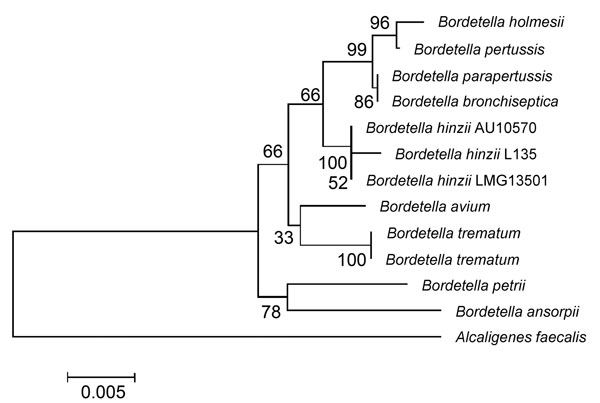Volume 19, Number 3—March 2013
Letter
Bordetella hinzii in Rodents, Southeast Asia
Figure

Figure. . . Maximum-parsimony phylogenetic tree of 16S rRNA gene of Bordetella hinzii isolate from this study (L135) and validated Bordetella species. Numbers along branches indicate bootstrap values. Scale bar indicates nucleotide substitutions per site.
Page created: February 12, 2013
Page updated: February 12, 2013
Page reviewed: February 12, 2013
The conclusions, findings, and opinions expressed by authors contributing to this journal do not necessarily reflect the official position of the U.S. Department of Health and Human Services, the Public Health Service, the Centers for Disease Control and Prevention, or the authors' affiliated institutions. Use of trade names is for identification only and does not imply endorsement by any of the groups named above.